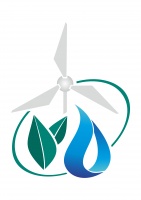Enhancing water distribution in Water User Associa-tions (WUAs) by way of designing and implementing WUA decade-based water supply scheduled plans broken down by water consumers and days
| Title | Enhancing water distribution in Water User Associa-tions (WUAs) by way of designing and implementing WUA decade-based water supply scheduled plans broken down by water consumers and days |
|---|---|
| Category of tools | Water distribution technology |
| Field of application | Use of water resources |
| Usability of practice for adaptation to climate change | Moderate |
| Implemented by | Scientific and Information Center (SIC) of Interstate Commission for Water Coordination (ICWC) and Swiss Agency for Development and Cooperation (SDC) |
| Used by |
Country: Kyrgyzstan Province: Osh Region District: Kara-Suu District Settlement: WUAs in proximity of the Aravan-Akbura Main Canal |
| Practice also applied in the following localities |
Aravan District of Osh Region |
| Local specifics |
Akbura River Basin Shallow groundwater occurrence |
| Practice usage period |
Start date: 01.01.2003 End date: 31.12.2011 |
| Problem solved through this practice |
|
| Tools used in the practice |
Principles of water rotation and public participation |
| Description of the practice and its results |
Uniform and fair water distribution among water consumers (WCs) inside WUAs, clear alignment and coordination of water supply schedules via internal WUA networks of all levels with water supply schedules to WUA derivation canals from main canals is ensured by enhancing existing water distribution planning techniques based on water rotation (recirculation) and volumes of technically deliverable water executed via decade planning (within vegetation period decades). Actions: In accordance with the approved decade-based water distribution scheduled plan, decade water quantity is supplied to WCs in turns as per their water requests. The schedules can be quickly adjusted depending on water availability in concerned water bodies. The technique is based on wide engagement of WCs in distribution procedures – not only WUA personnel but also WCs themselves know who is receiving water, when and how much of it and, thus, can monitor each other and assess each other’s operations. This promotes better mutual water discipline among WCs. The process can be controlled from beginning to end based on corresponding documents (decade water distribution schedules, water request from WCs and WUAs, water request registration logs, water accounting logs at WUA headworks and WUA derivation canals. Results: As the result of introducing the decade-based water distribution plan in 2009-2011:
|
| Lessons learnt and recommendations made |
Lessons learnt: Thanks to proper water use management inside WUAs, water intake in the upper sections of main canals and rivers decreased by 50-80% and, thus, the unproductive discharge to collectors and depressions reduced also. Reduced water intake in the head sections of main canals and rivers led to the increased influx of high-quality irrigation water in their end sections resulting in better observance of environmental requirements aimed at preserving wild flora and fauna. Recommendation: Country-wide scaling-up of the practice of decade-based water distribution planning inside WUAs is necessary and possible. |
| Source of practice |
The practice is the result of streamlining:
|
| Brief information on the project |
Project title: Integrated Water Resources Management in the Fergana Valley (IWRM-Fergana). Project duration: Jan 01, 2001-Dec 31, 2012 (12 years). Project goal and objectives: overall project goal was “to contribute to safer living, environmental sustainability and wide social harmony, to support rural restructuring in Central Asian countries by enhancing water resources management based on the example of the Ferghana Valley”. Project beneficiaries: WUAs, farmers in project sites. Project implementer: IWMI, SIC of the ICWC, Project Steering Committee (PSC) consisting of 3 representatives of the Ministries of Rural and Water Management (MRWM) of project target countries, 3 heads of Regional Water Administrations hosting project target sites. |
| Funding source | Grant from the Swiss Government via SDC |
| Information sources |
|
| Form submission date | 02.04.2018 |
| Print Compare with other practice |




